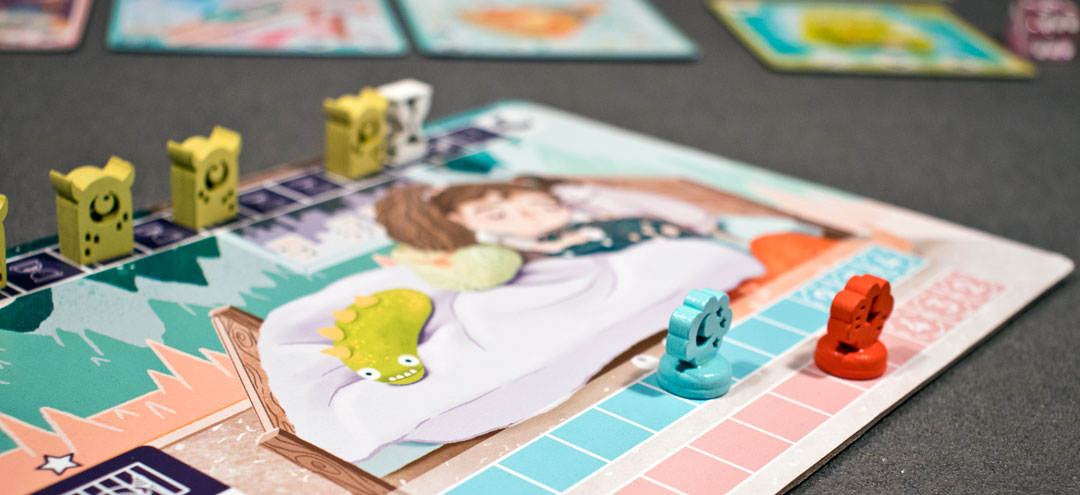 One look at Dream Catchers was enough for me to want to dive and find out more. The artwork is fantastic and perfectly evokes the feeling of a book you’d read to a child at bed time. Of course this ties in perfectly with the theme of the game. In Dream Catchers, players take on the role of, what else, dream catchers, looking to help children sleep at night by chasing away the bad monsters and nightmares.
One look at Dream Catchers was enough for me to want to dive and find out more. The artwork is fantastic and perfectly evokes the feeling of a book you’d read to a child at bed time. Of course this ties in perfectly with the theme of the game. In Dream Catchers, players take on the role of, what else, dream catchers, looking to help children sleep at night by chasing away the bad monsters and nightmares.
Dream Catchers is a cooperative hand management game for 2-4 players that takes about 30 minutes to play. Dream Catchers plays well at any player count.
Gameplay Overview:
The goal in Dream Catchers is to collect enough good dreams to fill the dream track. Each player gets to be a dream catcher with a unique power. To start the game, a random mix of dream and nightmare cards are dealt into a 3×3 grid. Each player then starts with 4 actions cards.
A player’s turn happens over two phases:
During the Dream Catcher Phase, a player can take two actions. The main action is usually to catch a dream or nightmare. To do so, a player discards cards with symbols matching the dream/nightmare card. The card is removed and the dream counter is moved up a space (if a dream was caught). If the dream contained a treasure icon, a treasure card is drawn and resolved. Players can also trade cards with other players for an action.
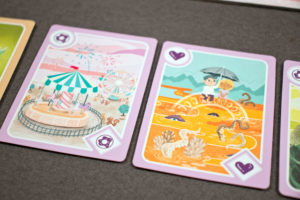
If there are monsters in play, a player can try to catch it as an action if they have the matching cards. They must then roll a 6-sided die and hit the monsters level or higher. If successful, they discard the action cards used, if not, they can try again with a new action.
Once both of their actions are used, the Night Phase beings. First, the time marker moves. If it moves onto a space with a monster token, a new monster is put into play, destroying any dreams with a matching icon.
Then the dream grid is refilled. If the drawn card is a dream, nothing happens. If it’s a nightmare, adjacent cards are checked to see if any of the symbols match. If so, the matching cards are discarded and the nightmare counter moves up a space for each card that matched. If there were no matches, the nightmare card slides one space in the direction of its arrow, again checking for matches. This process is repeated until the grid has a full nine cards again.
The game ends when player have filled up the dream tracker (win). The players lose if the nightmare tracker reaches the end, if there are ever 3 monsters under the bed, or if the time marker reaches the last space on the track.
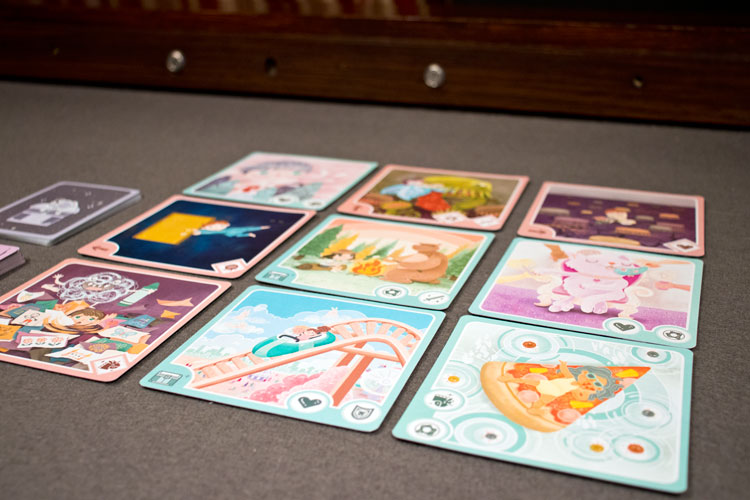
Game Experience:
As mentioned in the intro, the first thing you’ll notice about dream catchers is the amazing artwork. Artist Ping Ting Sim did a fantastic job of evoking the theme of the game throughout each illustration. In fact, all of the components were of excellent quality, from the wooden tracker tokens to the card thickness. I am very impressed with first time publisher Play Nation Studios.
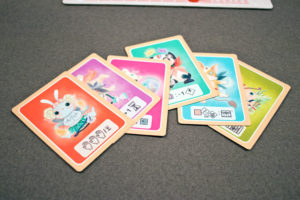
When it comes to the game play, Dream Catchers felt surprisingly fresh in an extremely crowded genre. Limited to two actions, players will constantly feel under the gun as they have so much they will want to do. Weeding out the good dreams, fighting the bad ones, and dealing with monsters are all going to suck up your precious resources.
My favorite though has to be the grid mechanic for dealing with nightmares. I enjoyed how tense the game got every time you drew a card, hoping it wasn’t going to be a matching nightmare. What’s even worse is that they can cause chain reactions. You might draw a card and have it match two nightmare cards, all of a sudden leaving 3 holes in your grid that need to be refilled. Sometimes that nightmare tracker moves too quickly for my tastes.
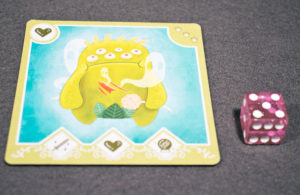
Dream Catchers also boasts some solid replay value. There are a total of 5 different bedroom boards, each scaling up the difficulty. For those looking for a challenge, Dream Catchers is happy to provide. In addition to that, there are 6 different dream catchers for the player’s to control, each of which has their own unique power.
Overall Dream Catchers is a great game, with one major flaw that I didn’t like. Catching monsters requires rolling their level or higher on a six-sided die. This feels not only extremely random, but wholly unnecessary. Catching a monster already requires the use of a precious action and discarding 3 matching cards. Adding the randomness of a die roll, felt like they took it just a little too far. In fact, we lost one game within 10 minutes because we couldn’t roll a 4. 5 actions were spent trying to hit that number and the dice just didn’t favor us. I think the game would be much better if they got rid of the rolling and just kept it at having to discard the 3 cards (or possibly requiring the use of 2 actions if you wanted to make it a tad harder).
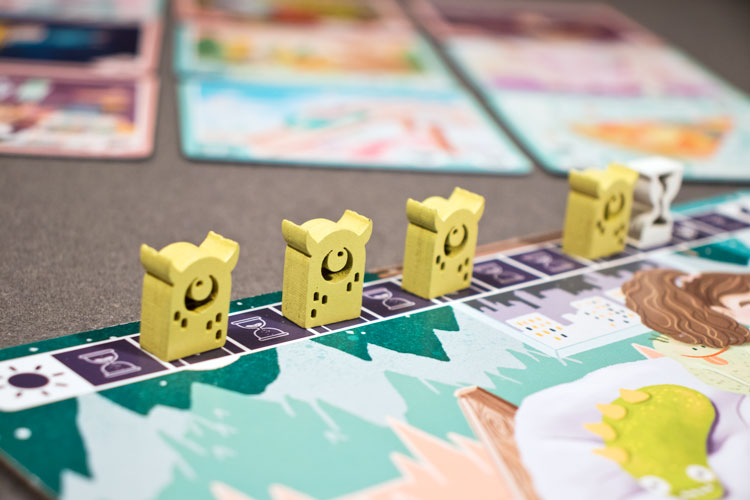
Final Thoughts:
Dream Catchers is a great cooperative card game that not only feels unique, but boasts some excellent production values. I’m definitely going to be on the lookout for more games illustrated by artist Ping Ting Sim.
Other than the aforementioned issue with the dice rolling, I really enjoyed Dream Catchers. The puzzly nature of the game worked well and forced the players to work together if they hoped to win. Add in to that some excellent replay value and a fresh theme, and you’ve got a win in my book.
If you are hoping to get a copy of Dream Catchers, it hasn’t made its way to the US yet, however Play Nation Studios is planning on running a Kickstarter early in 2018 for wider distribution, so keep an eye out for this one.
Final Score: 4 Stars – A fresh cooperative game with scaling difficulty and excellent production values that could use a few tweaks to kick it up a notch.
 Hits:
Hits:
• Excellent artwork and components
• Entertaining game play
• Accessible theme and rules
• High replay value
Misses:
• Monster catching felt random and unnecessary







